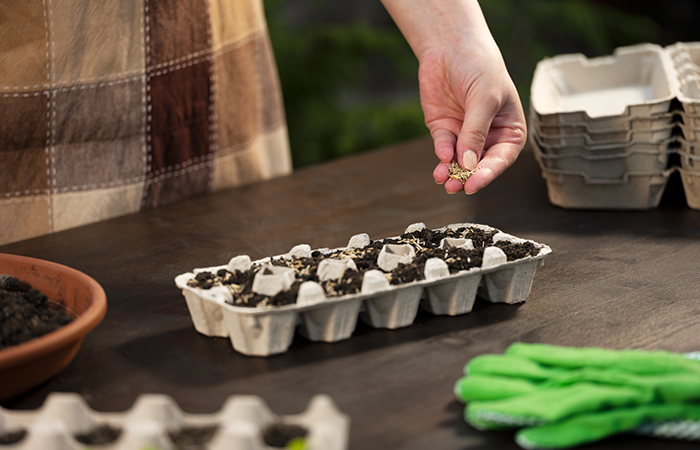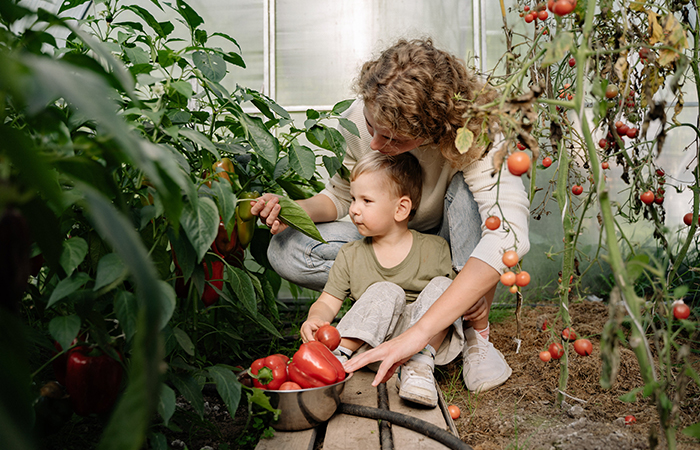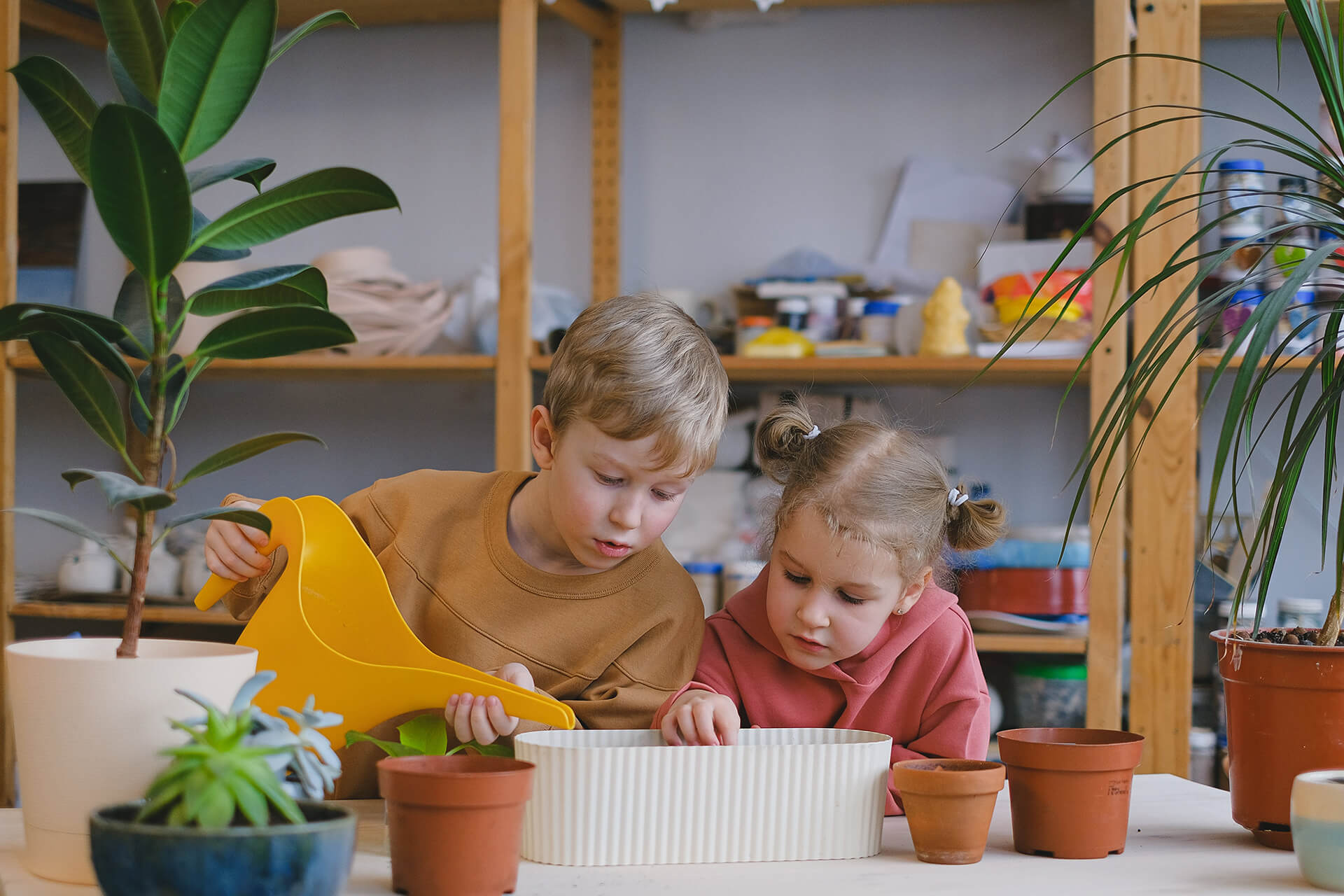Gardening: A World of Fun Learning About Food!
Looking for an activity that’s kid-friendly, educational, and builds self-confidence? Look into gardening!
Most of us remember planting a bean in a paper cup in elementary school and the excitement of watching it grow. You can offer your children the same joy and teach them where food comes from by starting your own garden. It may even get them interested in eating and cooking veggies! Now, that’s a WIN! Don’t worry if you don’t have a yard or a lot of space—container gardening on your porch or patio works too.
Did you know?
Gardening can help your child learn math, science and nature skills. It’s also a healthy habit because spending time outside reduces heart rate and muscle tension, and sunshine increases vitamin D levels. Gardening may even help your immune system!
Get Ready
- Consider where you will start your garden and what kind of garden you want. Besides veggies, you can also plant herbs or flowers. You can even grow a “salsa garden”. Chiles and tomatoes grow great in the summer, even in a container. Any space will work as long as it gets some sun.
- Find your “plant hardiness zone”, which helps you know which plants will grow best in your area. Go to the USDA website here and type in your zip code to find your zone.
- Look at your space and determine how many hours of sun your garden area or patio gets and match it to a plant with the same sunshine needs.
- Consider native plants, which are adapted to your local climate and soil. Some flowering native plants attract hummingbirds, while others attract butterflies, which are a joy to watch. Native plants don’t require fertilizer and need less water. Find free garden plans, and native plant lists here.
- Find an expert to talk about what grows best in your area. This can be someone at a local nursery or home improvement store, or your town’s County Extension Office. Find your county extension office here.
TIP!
Get even more from your WIC fruit and veggie benefits! Save seeds from tomatoes, peppers, beans, and peas, and use them to start your own garden.
Get Set
- The cheapest and often best way to start a garden is to begin with seeds. If you want to start before spring (or winter), you can use cardboard egg containers to plant your seeds indoors. Once they sprout, you can actually cut apart the sections and put the whole cardboard section into the ground!
- Involve your kids in the planning by looking at books on gardening from the library or at photos online. (Find a list of gardening books for kids here.) It’s fun to go to a nursery to look at plants and smell the different herbs before choosing which to plant.
- You don’t need fancy pots—you can start plants in discarded yogurt containers or even plastic storage bins. Just punch holes in the bottom for water to drain.


Go Garden!
- Let your child dig in the dirt to get used to working with the soil. Find small, easy-to-handle tools for your child to use—old baby spoons and forks may work for tiny hands.
- Seed packages will note how deep to plant a seed. Mark wooden craft sticks with inch marks to help plant seeds at the right level.
- Write down a watering and weeding schedule for you and your child. Some flowers need to have the dead blooms removed so others can grow. A schedule teaches your child responsibility and is a good reminder to water, especially when the seeds haven’t germinated yet.
- Learn about and teach your child the best time to pick a tomato, or the way to snip a flower or herb, etc. Talk about how you will use what you harvest—eat the cherry tomato off the vine or slice it on a sandwich? Put the flower in a vase or give it to Grandma?
- Avoid using chemicals in your garden; they aren’t needed and can be dangerous around children.
- At the end of the growing season, let flowers go to seed, and collect the seeds to plant next year. Consider repotting herb plants in a pot to keep indoors in the winter.

